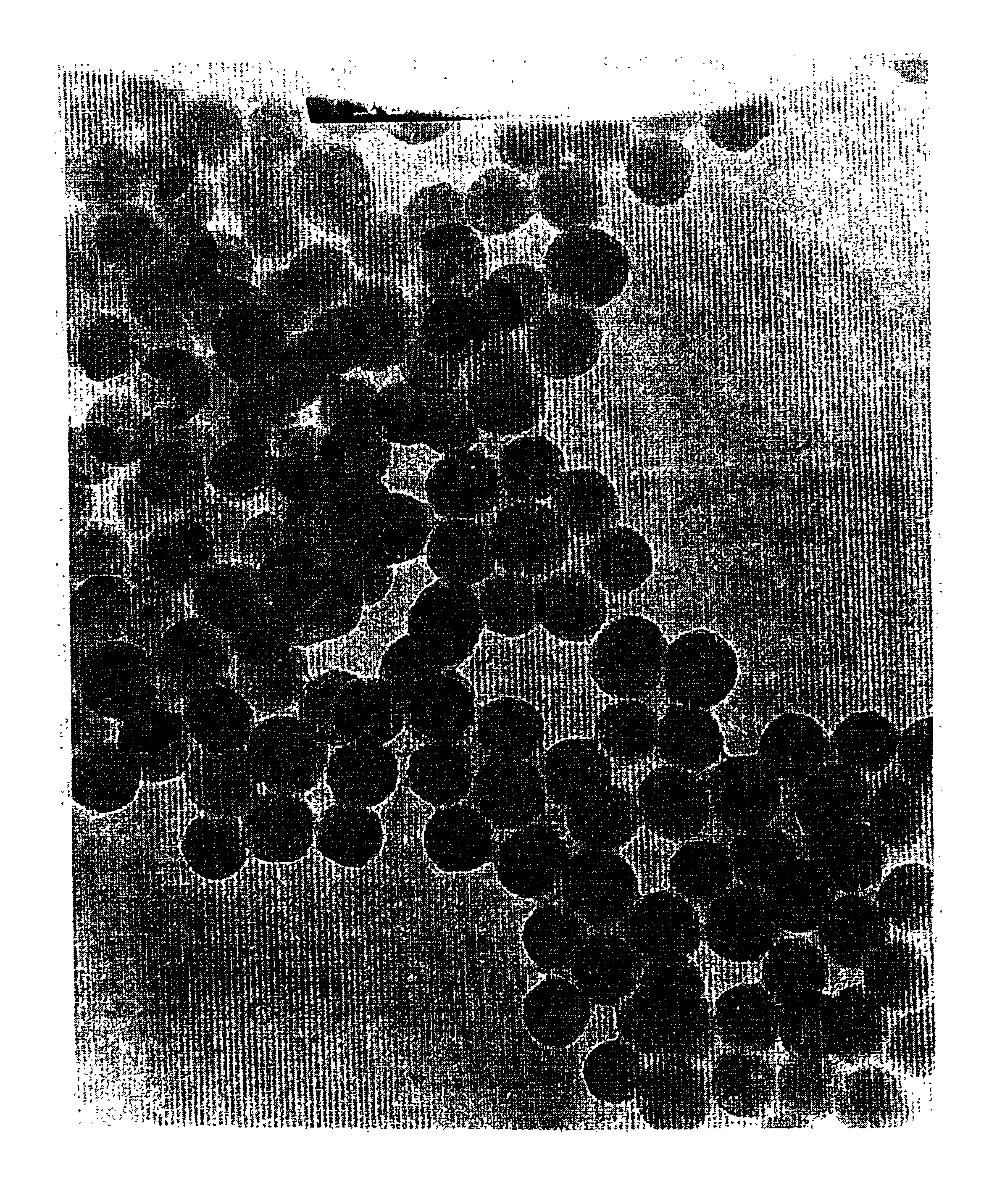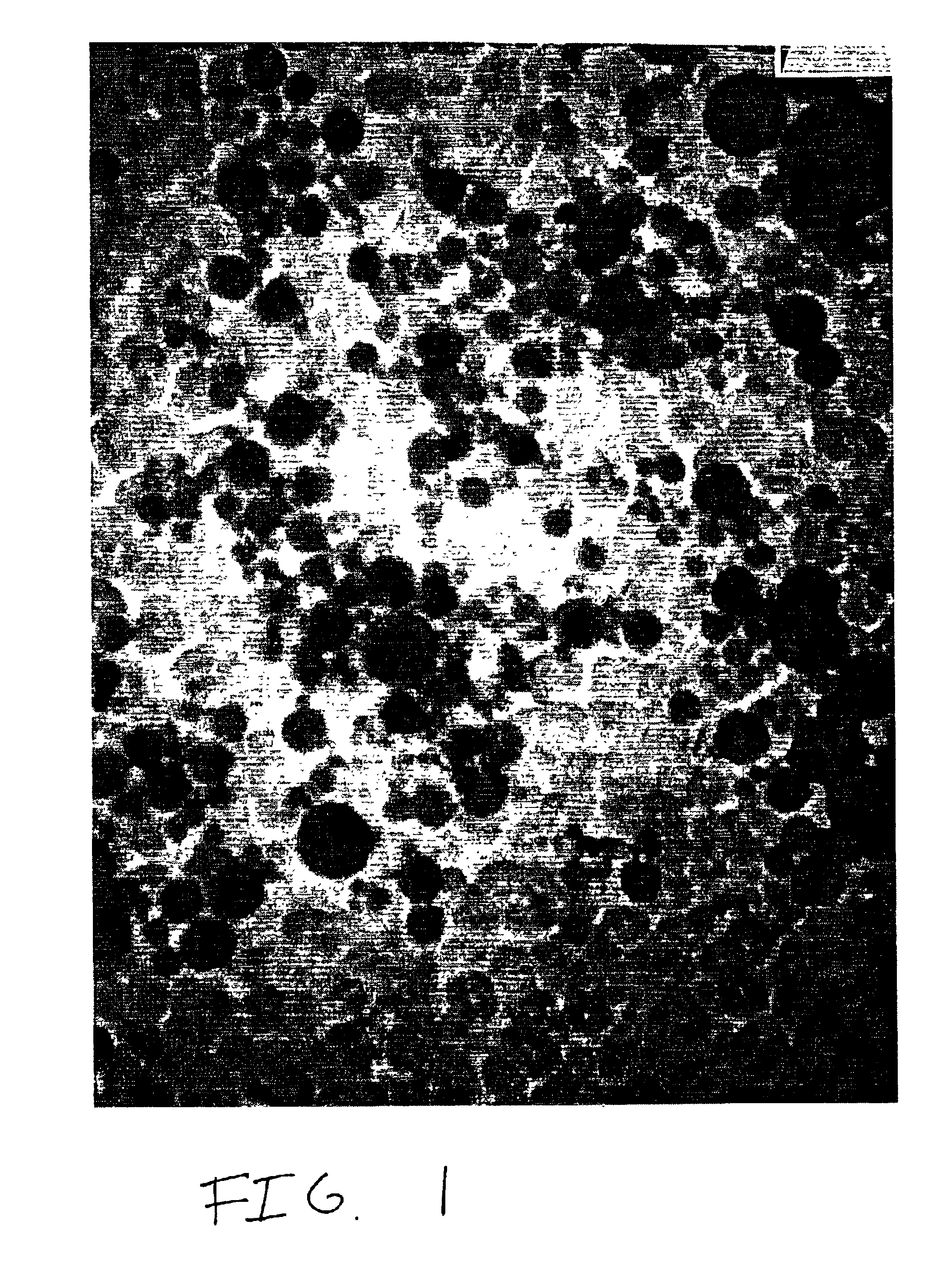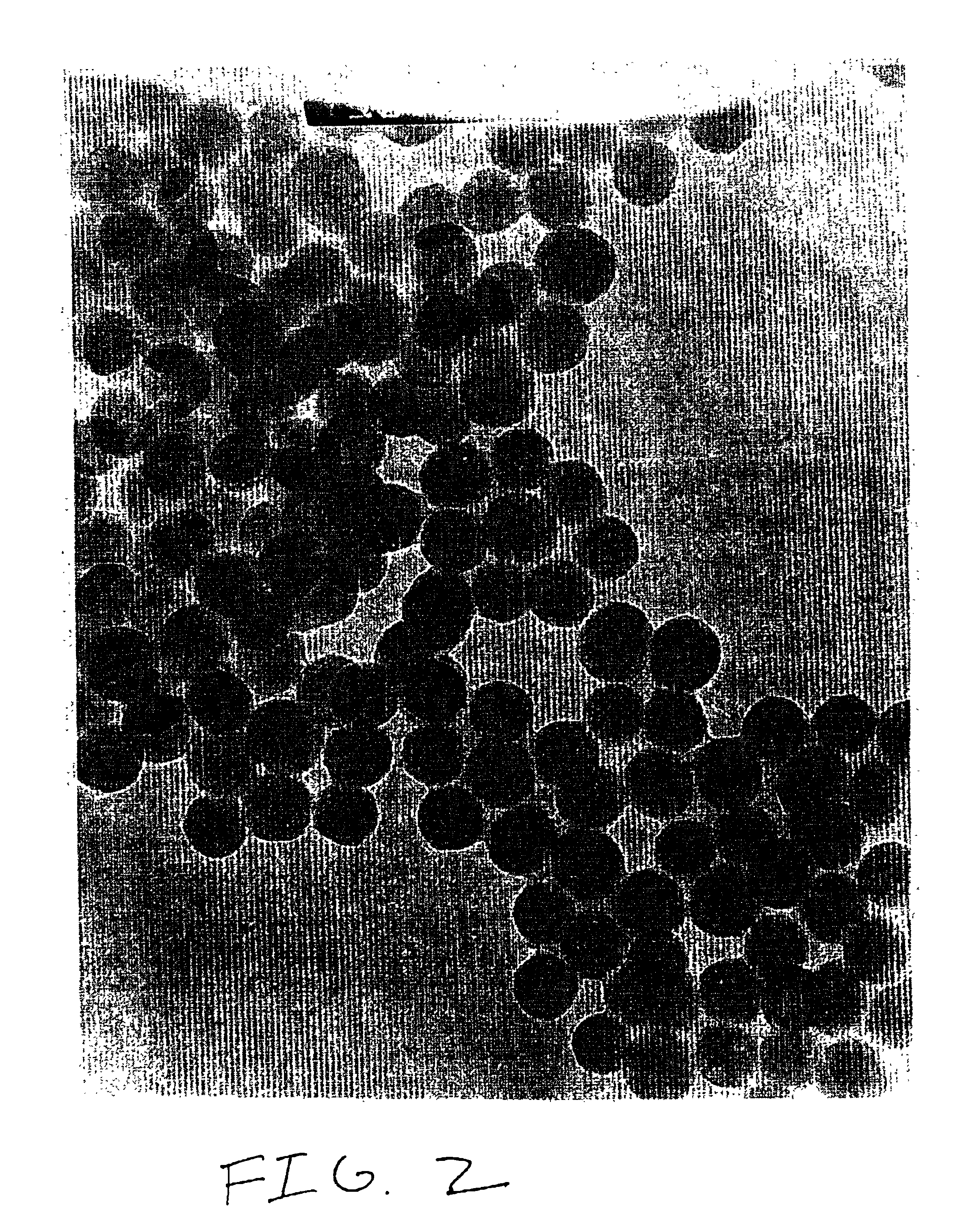Method for controling uniformity of colloidal silica particle size
a technology of colloidal silica and uniformity, which is applied in the direction of separation process, membrane, polishing composition, etc., can solve the problems of high sodium content, difficult use of wafer polishing, and easy affecting of electrical performance of finished semiconductor chips, etc., to achieve uniform shape and size, low sodium content
- Summary
- Abstract
- Description
- Claims
- Application Information
AI Technical Summary
Benefits of technology
Problems solved by technology
Method used
Image
Examples
example 1
[0022]A colloidal silica sol was produced generally in accordance with the methods outlined in U.S. Pat. No. 2,631,134 to Iler et al., incorporated herein in its entirety. Approximately 3 liters of Purolite C-106 cation exchange resin in the hydrogen form was suspended in 10 liters of deionized water in an agitated 5 gallon vessel and heated to 95 degrees Celsius. To this was rapidly added a volume of Zacsil E200 potassium silicate sufficient to deplete the ion-exchange resin, ending up with a final pH of 8.93. In this instance, 3,950 grams of the potassium silicate solution were required. The resulting colloidal suspension had an average particle size of 10.95 nanometers in diameter and a ratio of SiO2 to K2O of 38.
[0023]A portion of this material was then further treated with the same type of potassium silicate and ion-exchange resin according to the method described herein to increase the size of the colloidal silica particles while maintaining the uniformity of the size of the p...
example 2
[0027]The initial sol from example one above was used to produce a sol with an average particle size of 130 nanometers in diameter. As before, the accretion process described herein was used to effect the particle growth while maintaining the uniformity of the size of the particles.
[0028]The same process of ultrafiltration / diafiltration described in example one was used to concentrate the suspension and to dilute and remove dissolved impurities. In this case, the process started with 30 gallons of dilute sol, concentrated to about 35% solids. At this point, the sodium content was measured by AA to be 12.9 ppm. 60 gallons of diluting water was used, as described in example one, five gallons at a time. The final solution was measured at 1.2 ppm sodium content. When the reagent grade potassium hydroxide was added, the resultant 30% SiO2 product contained 2.2 ppm sodium.
PUM
 Login to View More
Login to View More Abstract
Description
Claims
Application Information
 Login to View More
Login to View More - R&D
- Intellectual Property
- Life Sciences
- Materials
- Tech Scout
- Unparalleled Data Quality
- Higher Quality Content
- 60% Fewer Hallucinations
Browse by: Latest US Patents, China's latest patents, Technical Efficacy Thesaurus, Application Domain, Technology Topic, Popular Technical Reports.
© 2025 PatSnap. All rights reserved.Legal|Privacy policy|Modern Slavery Act Transparency Statement|Sitemap|About US| Contact US: help@patsnap.com



